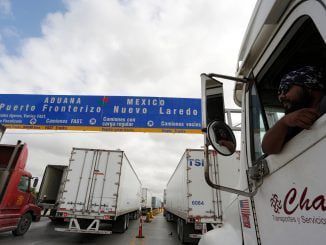
JUCHITAN, Mexico — A powerful earthquake that struck Mexico last week has left some 2.5 million people in need of aid and killed 96 others, authorities said on Monday, as officials rushed to get food and water to afflicted communities in the poor south.
Oaxaca state Gov. Alejandro Murat said preliminary reports showed that at least 12,000 homes were damaged, and warned the number was likely to rise.
As a result of the quake, Mexico said in a statement on Monday that it will no longer send aid it had offered to victims of Hurricane Harvey in Texas due to demands on its emergency services.
Murat said 1 million people in Oaxaca needed food, water, electricity and help rebuilding damaged homes, while in neighboring Chiapas state, which was closest to the epicenter of the tremor, 1.5 million people were affected, according to officials.
“We are united in facing this humanitarian crisis,” Murat said.
The 8.1-magnitude quake off the coast of Chiapas rattled Mexico City and sowed destruction across the narrowest portion of Mexico on the isthmus of Tehuantepec. Aftershocks continued into Sunday, and scores of people were wary about returning to fragile buildings hammered by the initial tremor, sleeping in gardens, patios and in the open air.
Sixteen people have been reported dead in Chiapas state and four in neighboring Tabasco. Many of the fatalities in Oaxaca were in the town of Juchitan, where more than 5,000 homes were destroyed.
Murat told Mexican television the quake hit 41 municipalities and had likely affected around one in five of the state’s 4 million-strong population.
“We’re talking about more than 800,000 people who potentially lost everything, and some their loved ones,” he said on Sunday.
The quake, the most powerful earthquake to hit Mexico in more than eight decades, was stronger than a 1985 temblor that killed thousands in Mexico City. However, its greater depth and distance kept the capital from being more seriously damaged.
President Enrique Pena Nieto on Friday declared three days of national mourning and pledged to rebuild shattered towns and villages.
However, some residents interviewed expressed frustration that the poor southern regions were still not getting the help they needed from the richer north and center of Mexico.
“Pena Nieto was able to make it here in his helicopter super fast. That’s how help should be arriving, right? Exactly how he got here. But it hasn’t,” said 48-year-old Alma Alverez, grandmother of a 3-year-old boy killed when his house collapsed in the quake.
Two other funerals of quake victims were underway in the same cemetery as Fernando Lopez, a cousin of Maximo, stood near the back, his head bandaged from cuts suffered protecting his grandmother from falling tiles when the disaster struck.
“This is what you’re going to see the next few days,” he said, pointing to the other funeral services taking place.
“The whole town will be here in the cemetery or in the hospital. We’ll tidy up what we can clean, but we won’t be celebrating anything on Sept. 15,” said Lopez, referring to the start of Mexico’s independence day festivities.
Juchitan’s mayor, Gloria Sanchez, agreed. “A great sadness overwhelms us,” she said. “The situation in Juchitan is critical, unlike anything we’ve ever seen before.”



